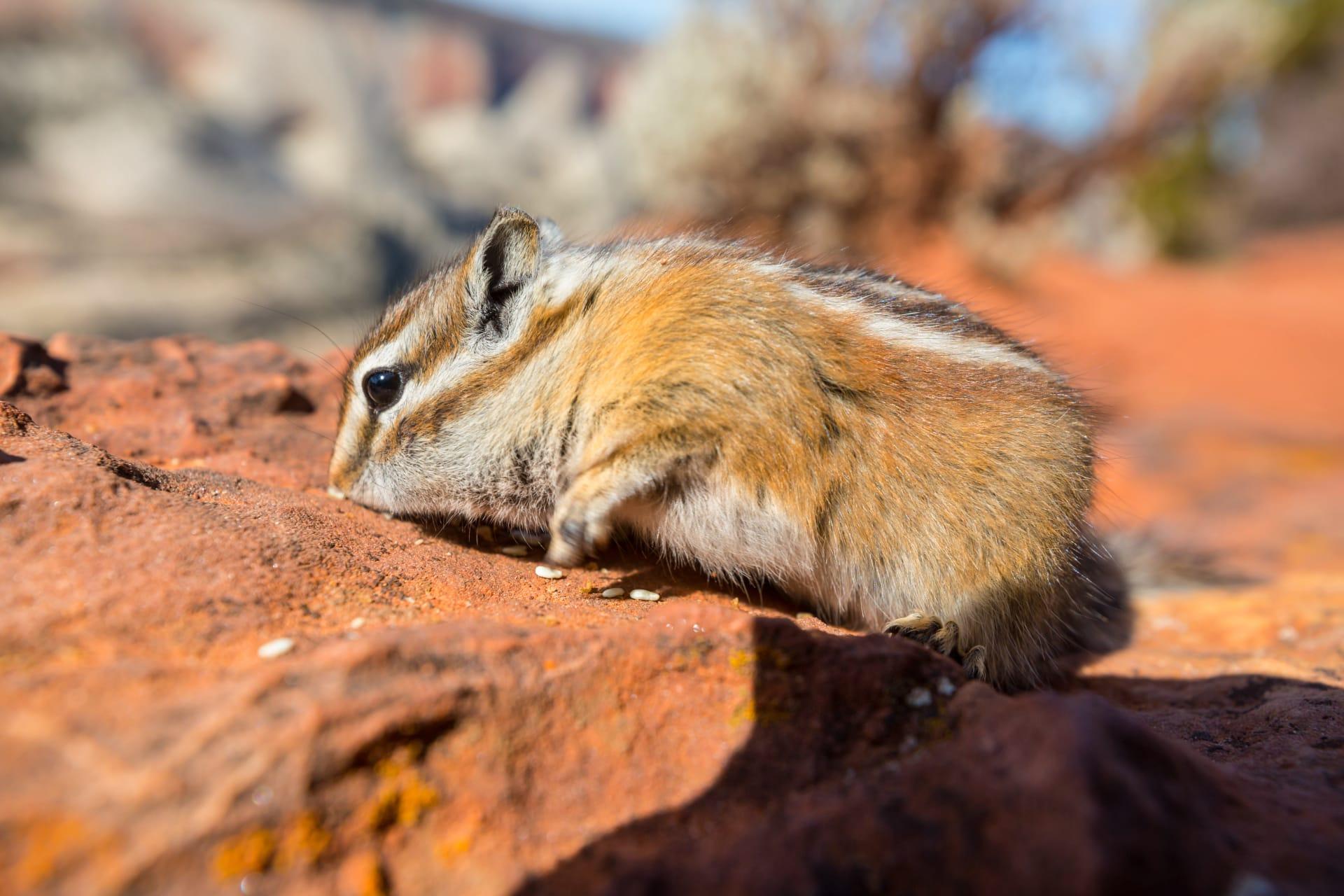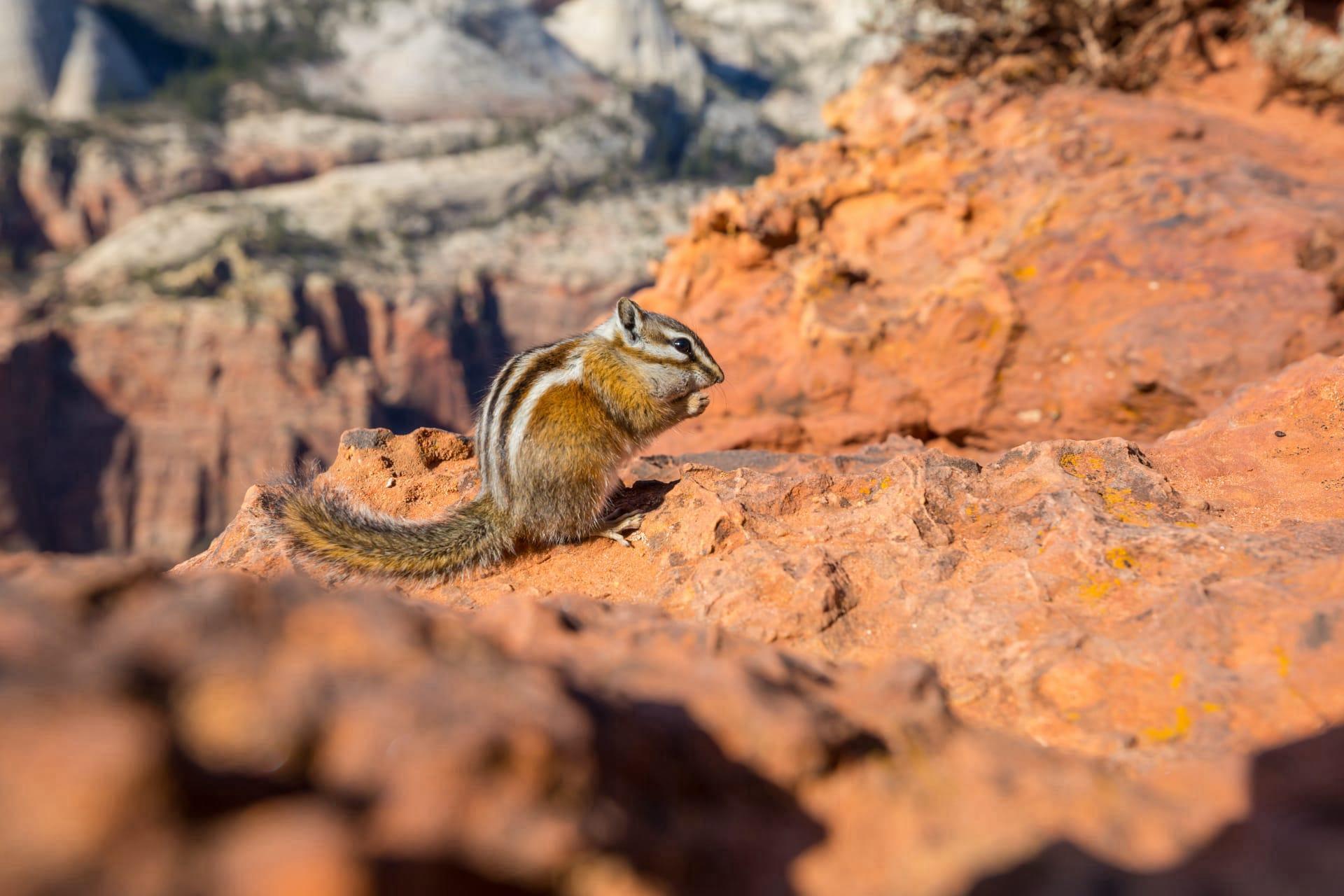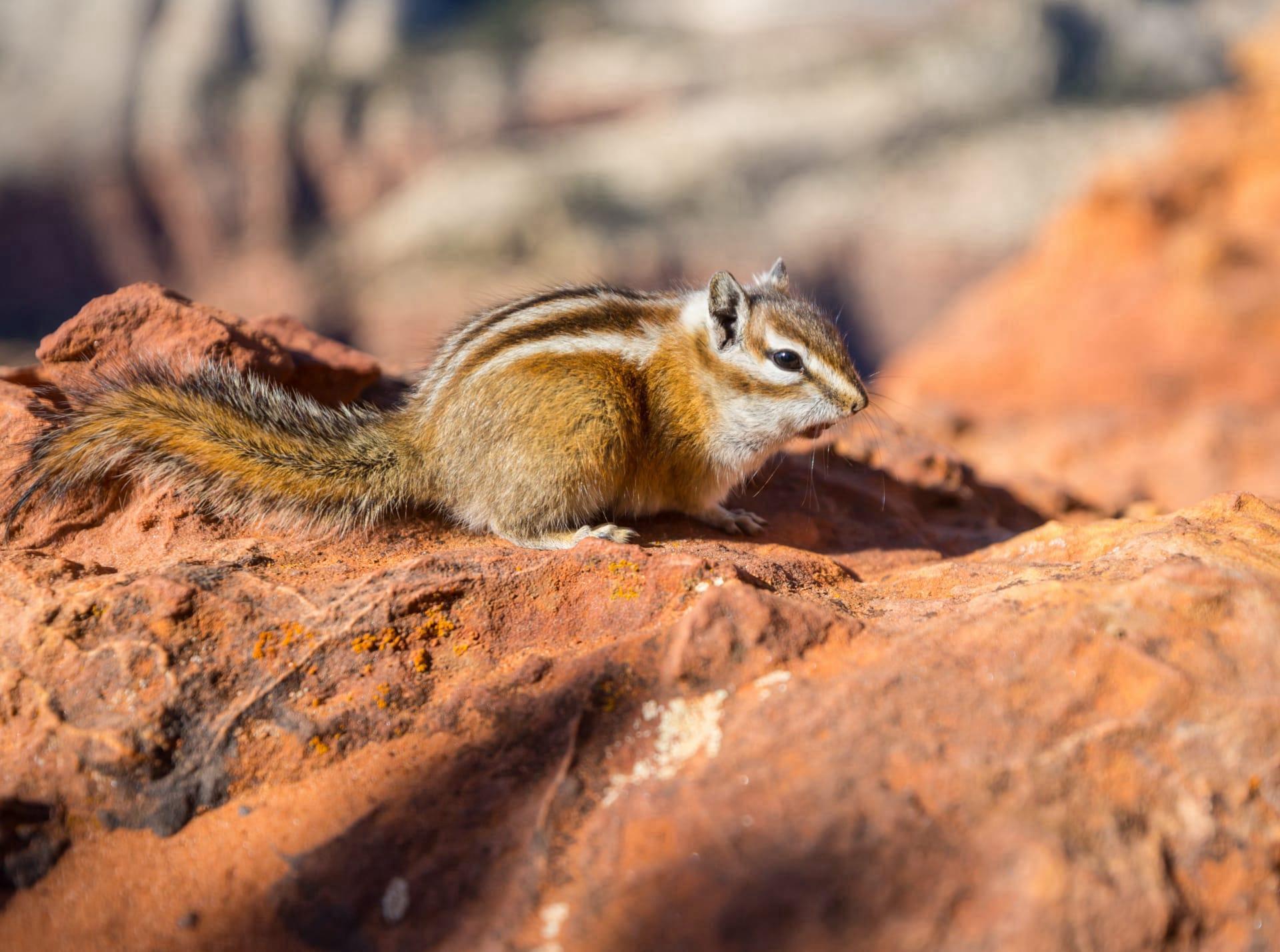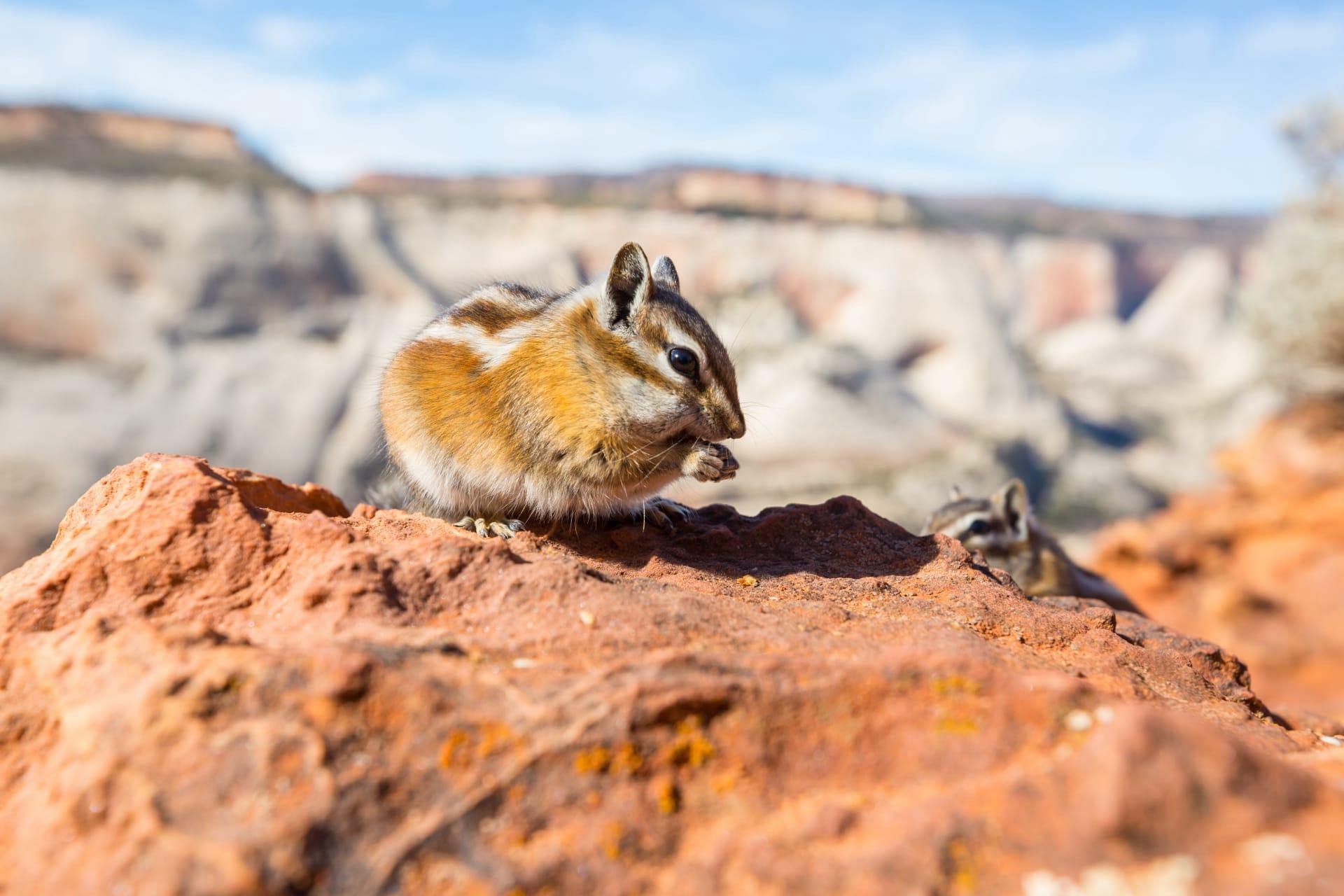Chipmunk
- Home /
- Mini Encyclopedia /
- Animal /
- Chipmunk
1
Chipmunks, small and sprightly members of the Sciuridae family, belong to the genus Tamias. These creatures are distinguished by their striking coloration, characterized by prominent stripes that run along their backs. There are about 25 recognized species of chipmunks, with the most famous being the Eastern Chipmunk (Tamias striatus) and the Siberian Chipmunk (Tamias sibiricus). The species differ slightly in size, coloration, and habitat preferences, but all share the common adorable appearance that makes them a favorite among wildlife enthusiasts.
Speaking of where these little critters make their homes, chipmunks are predominantly found in North America, with a vast majority of the species living in the United States and Canada. They are versatile dwellers, inhabiting a range of environments from dense forests to rocky areas, suburban backyards, and even urban parks. The Siberian Chipmunk is the outlier, native to Asia, specifically found in northern Asia and Russia. These animals are quite adaptable, able to thrive in various climates, but they generally prefer areas with abundant food sources and adequate cover to hide from predators.

2
Question: Do chipmunks hibernate during winter like some other small mammals and bears?
Answer: This is a common misconception. Chipmunks don't truly hibernate; instead, they enter a state known as torpor. During torpor, their body temperature, heart rate, and breathing slow down, but they wake up periodically to eat from stores of food they've gathered in their burrows. This is crucial because unlike true hibernators, chipmunks don't store fat reserves to last through the winter. They rely on these food caches to survive the cold months, waking up every few days to replenish their energy.

3
Chipmunks are masterful survivors. Their primary strategy is hoarding food for the winter. Throughout the warmer months, they're busy collecting and storing food like nuts, seeds, and berries in their burrows. These caches are essential for their survival during the winter months when food is scarce. Their cheek pouches, which can expand to three times the size of their heads, are perfect for carrying large amounts of food back to their burrows.
Another survival tactic is their agility and alertness. Chipmunks are quick and nimble, which helps them evade predators like hawks, snakes, and foxes. They are also equipped with sharp senses of hearing and sight, allowing them to detect danger quickly. Their vocal chirps serve as warning signals to other chipmunks when predators are near, showcasing their social aspect of survival.

4
In the ecosystem, chipmunks play several critical roles. They are seed dispersers, aiding in the spread of various plant species. As they collect and store (hoard) food, some of the seeds are forgotten or not consumed, which then have the chance to germinate and grow into new plants. This activity contributes significantly to forest regeneration and the expansion of plant species.
Chipmunks also serve as a food source for various predators, making them a vital link in the food chain. Their existence supports the survival of species like birds of prey, snakes, and larger mammals. In a balanced ecosystem, the presence of chipmunks can indicate healthy predator-prey dynamics, signifying a stable and thriving environment.

5
Film: One notable documentary featuring chipmunks is "Chipmunk: A Tale of Two Kitties." Produced in the United States and released in the early 2020s, this film offers an enchanting look into the lives of these small creatures, focusing on their daily activities, survival strategies, and interactions with other wildlife. It provides a blend of entertainment and education, appealing to both children and adults.
Book: "The Secret World of Chipmunks" is a fascinating read. Published in Canada in the late 2010s, the book is written by wildlife expert Thomas Maple. It delves deep into the habits, habitats, and social structures of chipmunks, combining scientific research with engaging narratives to bring the world of these creatures to life.
Book: Another insightful book is "Chipmunks: Masters of Survival." Authored by American biologist Susan Green, it was published in the mid-2020s. This book explores the adaptive strategies of chipmunks, their role in the ecosystem, and the challenges they face in the changing natural world. Green's expertise shines through in the detailed observations and clear, accessible writing style.